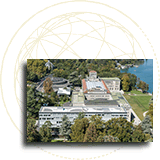Since the establishment of the WTO on 1 January 1995, no less than 23 States and separate customs territories have joined the multilateral trading system through the procedures of Article XII of the Marrakesh Agreement. These represent a range of economies, from global players to important emerging and transition economies, and least-developed countries. A relatively large number are at various stages of the accession process. A certain limited number have still to take the decision to seek WTO membership.
Accession to the WTO is complex, multifaceted, and demanding. The nature of the WTO’s contractually binding system of rules and disciplines makes this inevitable. Each accession is a negotiation between the acceding government and WTO Members and it is conducted multilaterally and bilaterally. In each case the essential issue is the same: to attain a workable balance between the special needs of the acceding government on the one hand and the credibility and viability of the rules-based WTO system on the other. The accession process is designed to ensure that new Members emerge as full and effective players from their date of membership. It is a process of learning and preparation for WTO membership. For the same reason, each accession is conducted and completed on its own merits.
For a variety of reasons, the accessions dossier has acquired a high profile in the WTO’s activities. This has resulted in an increasing demand for information on the dynamics of the accession negotiations based on experience gathered to date. The Handbook is aimed at satisfying this demand. The purpose is to explain how the WTO accession process functions and to provide some insights into the commitments undertaken by States and separate customs territories who have joined the Organization since the establishment of the WTO.
The Handbook contains a detailed analysis of the accessions conducted so far and tries to draw genuine, meaningful patterns — where they exist — it being understood that each accession is conducted on its own merit, with its own pace, and is therefore unique. This analysis takes us up to the situation at present, i.e. August 2007. It goes without saying that the picture will evolve as countries currently in the negotiation phase become Members of the WTO. The WTO’s Accessions Division keeps developments up-to-date through regular revisions of its WT/ACC/10 document. In the years to come, this Handbook would therefore need to be read together with the updates provided and circulated by the Accessions Division.
Credit for this publication must go first and foremost to Mr. Peter Williams who worked in close collaboration with the Accessions Division as well as with other Divisions of the WTO Secretariat. We should also express appreciation for the support provided by the Information and Media Relations Division in making this publication possible.
We hope the Handbook will serve as a useful source of reference for officials from acceding governments, WTO Members, the academia, and the general public.
Arif Hussain
Director
Accessions Division
WTO Secretariat
August 2007
Disclaimer back to top
This guide has been prepared to assist public understanding of the process of accession to the WTO. The WTO Ministerial Conference and the General Council have the exclusive right to adopt interpretations of the Marrakesh Agreement Establishing the WTO and its Multilateral Trade Agreements. This guide is not intended to, and does not provide, a legal interpretation of WTO provisions.
Abbreviations back to top
| GATT | General Agreement on Tariffs and Trade |
| IMF | International Monetary Fund |
| MTAs | Multilateral Trade Agreements |
| LDCs | Least-developed countries |
| SSGs | Special safeguard provisions |
| TRIPS | Trade-Related Aspects of Intellectual Property Rights |
| TRQs | Tariff rate quotas |
| UNCTAD | United Nations Conference on Trade and Development |
| WTO | World Trade Organization |
